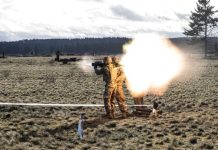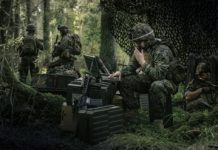Not long after “ET” used a modified Speak & Spell to phone home*, select units within the US Army were using the OA-8990/P Digital Message Device Group (aka KY-879/P) to communicate.
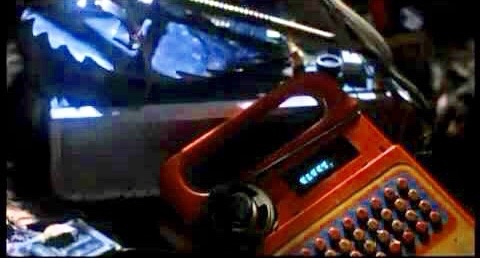
I used the DMDG from the late 80s up until the mid-90s while assigned to both 3rd ID LRS and in 3rd SFG(A) on a SOT-A.
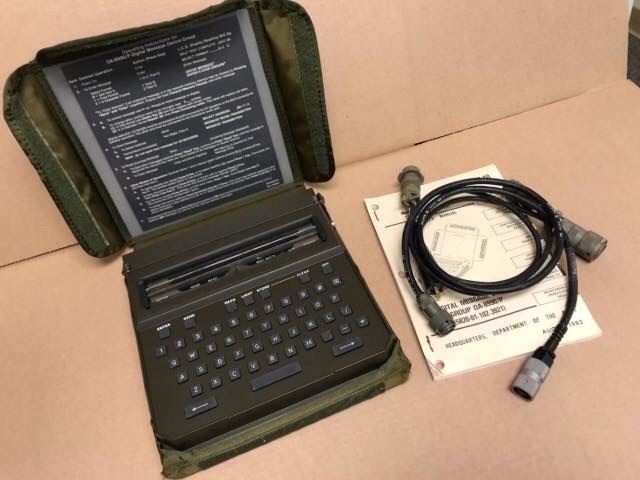
Manufactured by Racal Communications, it was a burst transmission device. Messages were formatted and encrypted via one-time pad and then entered into the device via the keyboard. The dot matrix screen could be backlit but was used only with caution so as not to give away the user’s location at night. Although, the nylon cover could be configured to partially conceal the screen from three sides, the glow reflecting off of the user’s face was noticeable, especially if he was wearing glasses.
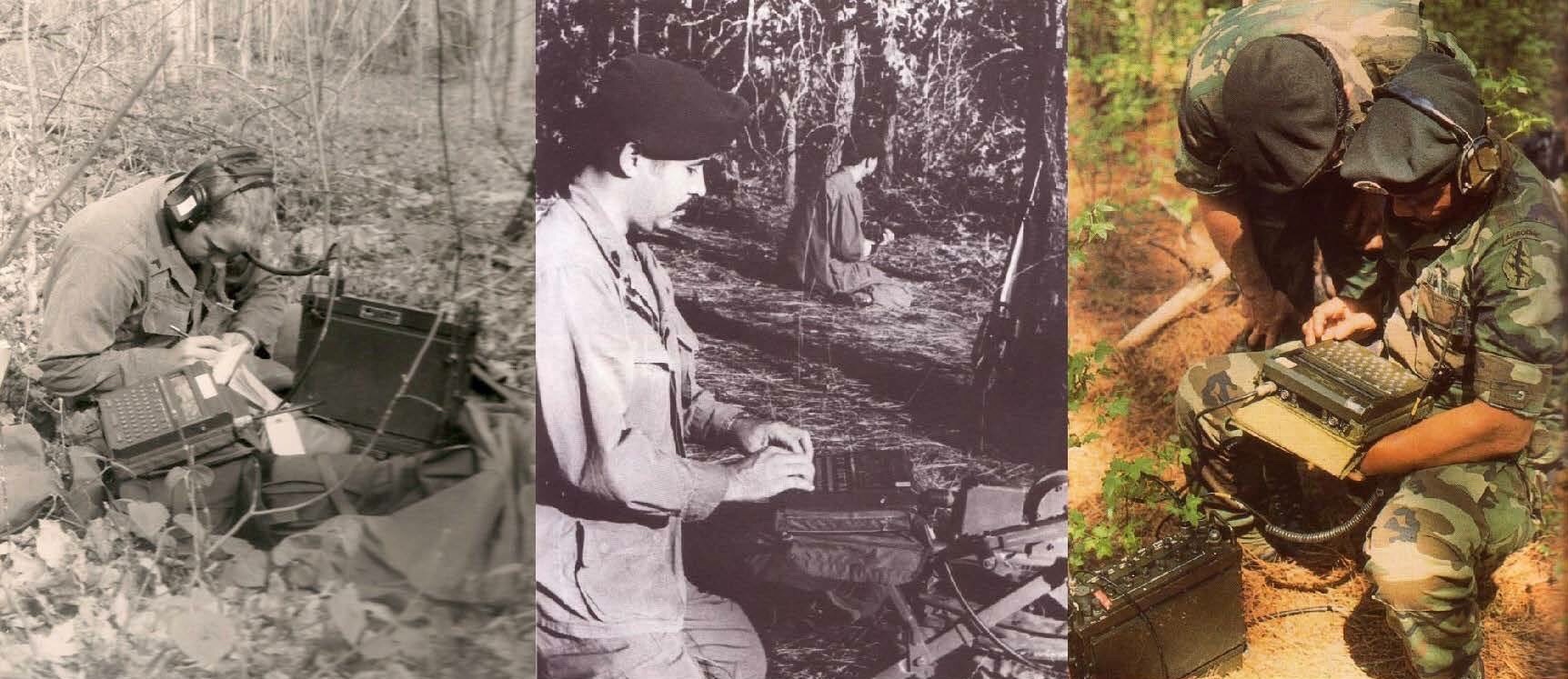
The DMDG sent a digital burst signal when used primarily in conjunction with HF radios. Initially these were the AN-PRC-74 and 70, but I only ever used the device with the AN/PRC-104A and AN/PRC-132 SOHFRAD (Special Ops High Frequency Radio). It could also used with SATCOM systems such as the AN/PSC-3, AN/LST-5 and AN/MST-20.
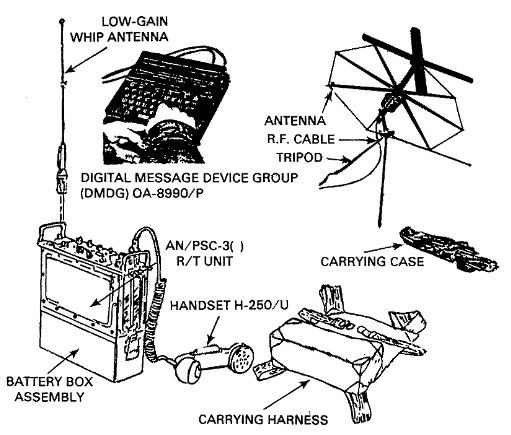
In the photo at the top, you can see the cables used to connect the DMDG to the radio as well as an external battery such as the Magnesium BA-4386 (also used in the AN/PRC-77) which only provided about four hours of power.
The combination of burst transmission and HF comms was intended to thwart threat radio direction finding efforts but the baud rate was so slow (266.6 baud), messages took a really long time to transmit. At that speed, you could only transmit 27 characters a second on HF. For SATCOM shots, you could speed it up to 1200 baud but satellite time wasn’t as prevalent during the 80s and 90s.
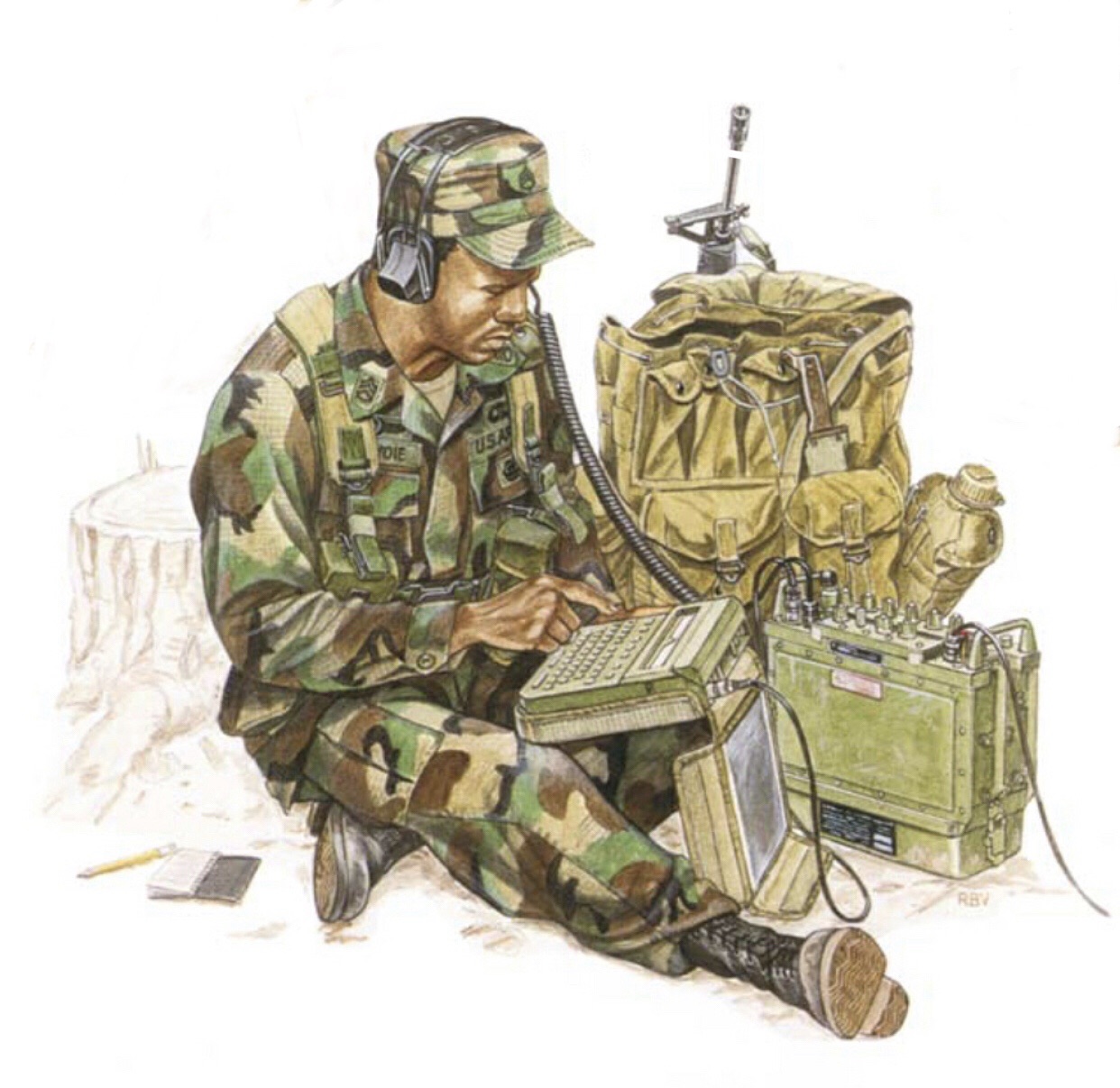
During an International (NATO) LRRP exercise in the late 80s, I learned that the Dutch 104th Reconnaissance Co used the MA-4450 Message Entry and Read-Out Device. The MEROD looked like the DMDG, but offered onboard encryption.
By the mid-90s we began to transition to the AN/PRC-137 Special Mission Radio System which was much smaller and lighter than earlier radios and used a palmtop Data Messaging Device to transmit messages via a radio which could be queried by a base station for message traffic. When used for Special Reconnaissance missions this allowed to communicator to leave the radio a safe distance from the element. This combined with much faster data transfer rates greatly lowered the risk of threat direction finding.
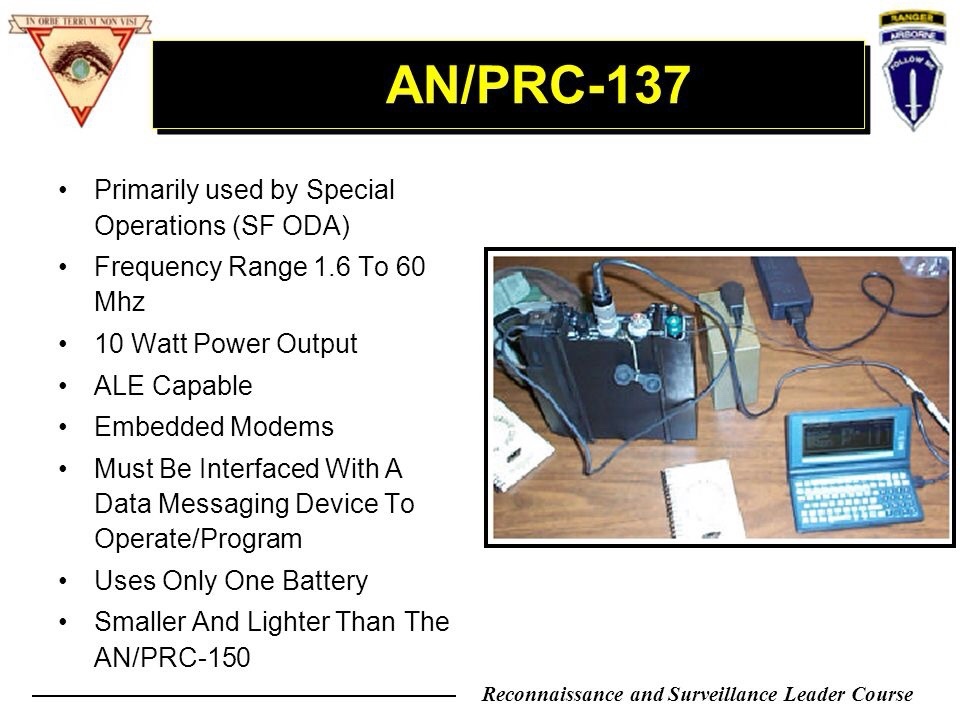
The DMDG is now a relic of the Cold War. Today, handheld cellular devices provide more capability than we could carry just two decades ago. Communicators use a variety of multi-band devices which offer onboard encryption as well as data transfer rates high enough to provide live video feeds using waveforms which boast low probability of detection and intercept.
* “E.T. the Extra-Terrestrial” was a 1982 movie by Steven Spielberg. A famous line is “E.T. phone home.”
You can skip to the end and leave a response. Pinging is currently not allowed.


